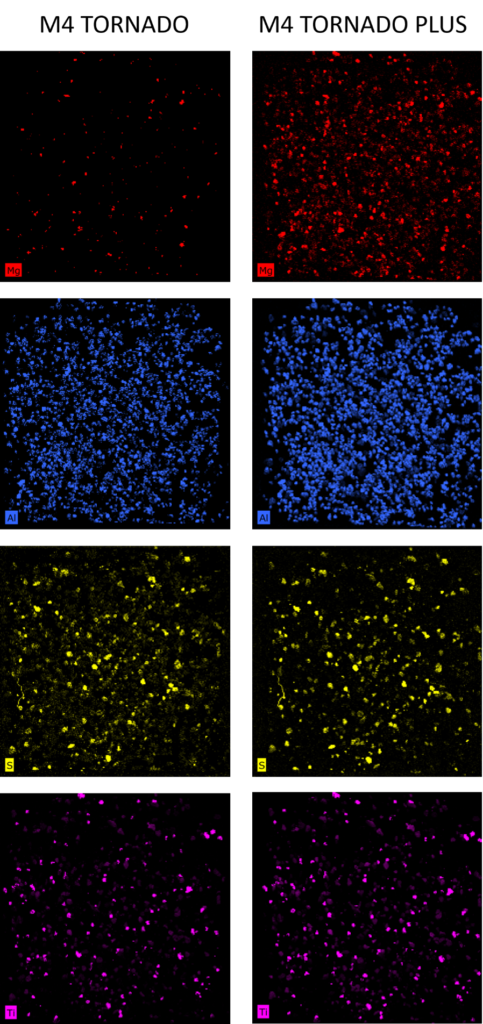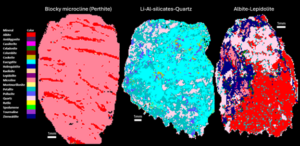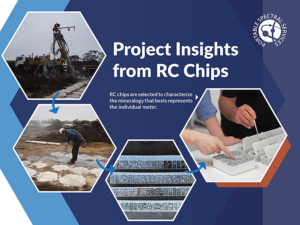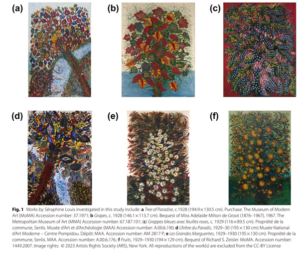
A Bright Future Ahead
Portable Spectral Services Announces Exciting Management Transition
The M4 TORNADO PLUS is the newest, most advanced micro-XRF spectrometer manufactured by Bruker. One remarkable feature of this new spectrometer is the ability to extend measurements down to detect carbon (Z=6) which improves the response of all light elements including F, Na, Mg, Al, Si, P and S along with elements such as Ti. This is possible thanks to the new dual Silicon Drift Detectors (SDDs) with its super-light element window, which can process the higher count rates necessary to detect light elements (for more information on this topic see our article “Why light elements are difficult to measure with portable XRF”). This improvement has significantly improved the detection and accurate identification of silicate and sulphide phases in samples.
In this study, Portable Spectral Services tested the potential of the new super-light element SDDs, by comparing the response of selected elements measured from a set of minerals through both the M4 TORNADO and M4 TORNADO PLUS micro-XRF. For this, measurements were run at the same analytical conditions for both spectrometers, namely at:
From this experiment, we observed a considerable improvement in the detection of elements from the data collected with the M4 TORNADO PLUS micro-XRF. This improvement in detection is very clear for the “lighter” elements and attenuates as the atomic mass of the analysed element increases (Figure 1). Such an enhancement is explained by the higher number of counts detected by M4 TORNADO PLUS, especially for those elements with low mass (Figure 2), thanks to the ability of the super-light element SDDs to process higher count rates than their predecessors.
The M4 TORNADO PLUS also provides the option to run measurements at atmospheric pressures in conjunction with a helium-purge system, which enhances the response of light elements for those samples that cannot be measured under vacuum (e.g., plant material and human tissue). Future studies will include analyses performed with the helium-purge system.
For more information, visit our micro-XRF website at https://www.microxrf.com.au/

Figure 1. Comparison between elemental maps from M4 TORNADO (left) and M4 TORNADO PLUS (right). Note the improved detection of the lighter elements; magnesium (Mg), aluminium (Al) and sulphur (S). This improvement is less apparent for elements with higher atomic mass, such as titanium (Ti).



Figure 2. Counts of individual elements detected by M4 TORNADO (grey) and M4 TORNADO PLUS (blue). The increase in counts detection is inversely related to the mass of the analysed element, meaning that lighter elements respond better with respect to heavier elements, namely Al > S > Ti.

Portable Spectral Services Announces Exciting Management Transition

Our tool introduces uXRF (micro-X-ray fluorescence) scanning technology to RC chip analysis, enabling rapid, non-destructive, and quantitative analysis of major, minor, and trace mineral phases.

Automated micro-X-ray fluorescence (micro XRF) technology emerges as a powerful tool to rapidly and accurately capture the mineralogy of rock chip, RC and AC samples.

Findings of an ongoing regional evaluation study over concealed Proterozoic lithologies known to host magmatic nickel sulphides with potential to host other base-metal, gold and rare earth elements (“REE”) systems within the Fraser Range, Western Australia.

Findings of an ongoing regional evaluation study over concealed Proterozoic lithologies known to host magmatic nickel sulphides with potential to host other base-metal, gold and rare earth elements (“REE”) systems within the Fraser Range, Western Australia.

Findings of an ongoing regional evaluation study over concealed Proterozoic lithologies known to host magmatic nickel sulphides with potential to host other base-metal, gold and rare earth elements (“REE”) systems within the Fraser Range, Western Australia.
